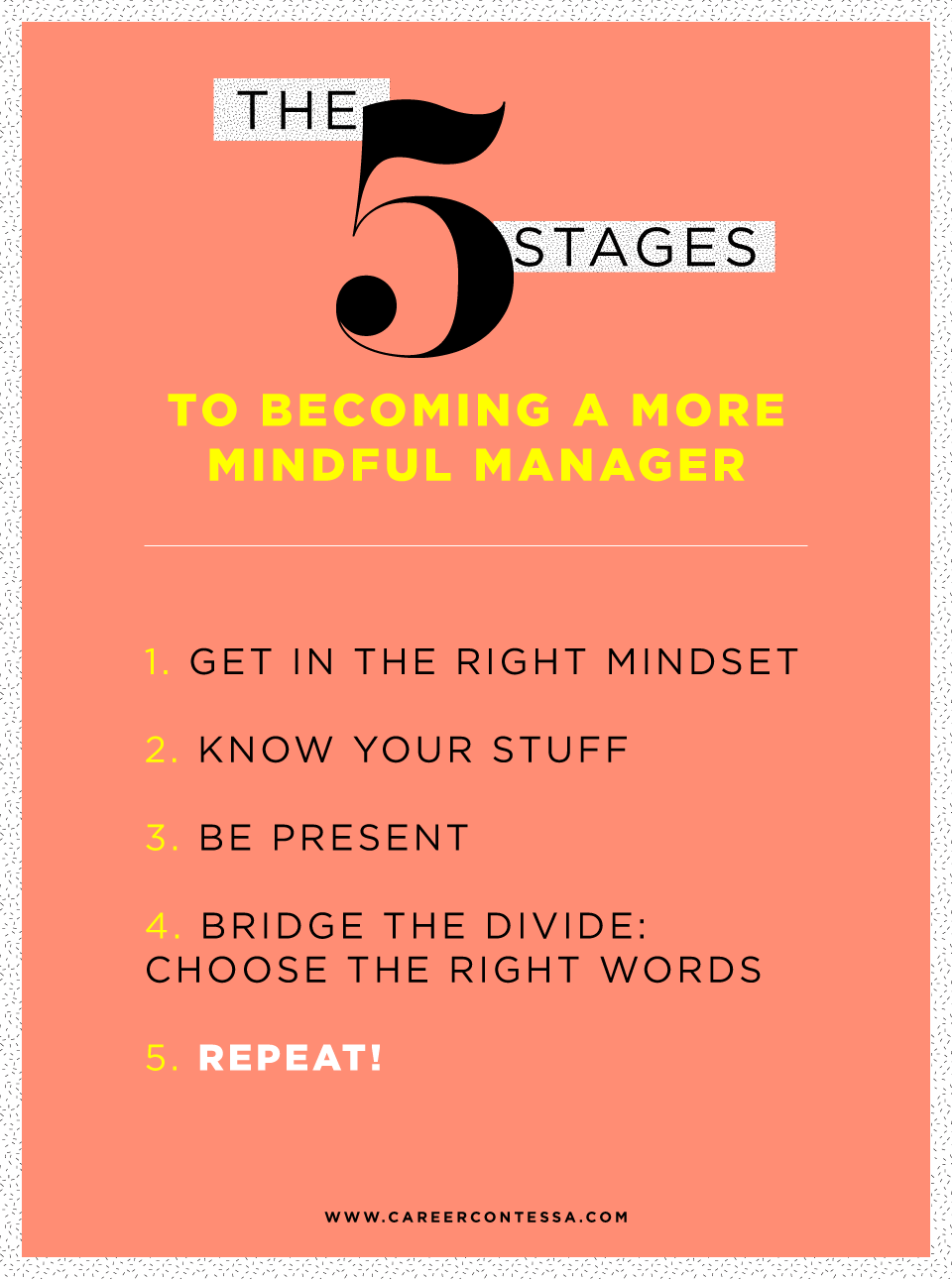How do you manage mindfully?
Managers have the ability to make or break an employee’s experience. A
positive working relationship between manager and direct report can transform the work environment to be more productive and enjoyable, but effective management is harder than you might expect and challenging in ways you might not anticipate.
Here are five steps to effective,
inclusive, and mindful management, which have real benefits for your employees and you.
Step 1: Get in the right mindset
Before you can do anything, you have to start with the right attitude, and that’s easier said than done. When we first become managers, we may not expect to have to shift our priorities drastically. After all, if you were a great teammate, why wouldn’t you be a great manager?
When you’re one of many on a team, it’s often up to you to be your number one advocate, but as a manager, you’re no longer just
advocating for yourself—you’re also advocating for your team and their work. As women, we can often struggle with advocating for ourselves more than men do, but sharing the collective victories of your team will be vital to not just your success, but your team’s success. Getting into this mindset will ultimately lift your team up while also allowing you to rise with them.
Step 2: Know your stuff
Simple enough advice, but it gets lost amidst the hustle and bustle of trying to establish yourself in a new position. The key differentiator amongst new employees who excel versus those who are just “good enough” is knowledge. You need to know the product, offer, client—whatever it may be—inside and out as well as your role and responsibilities. It’s not only the best way to gain trust with your customers and colleagues, but it also shows your team that you’re committed to the company vision, which indicates you’re there for the long haul.
Step 3: Be present
Whether you’re in a meeting, or speaking to someone one-on-one, ask yourself—are you actually listening? If you’re going to be present, you must have an outward focus. If you want to be heard, first you have to hear. If you want to be understood, understand.
Take responsibility for the perception you create. Being present will not only benefit you, but it also shows your colleagues that you respect them and their ideas. Leadership is built on your ability to communicate with your co-workers, no matter their level on the corporate ladder, and taking the time to check-in will ensure that they do not check out.
It’s not easy, but if you make an effort to do this, especially in circumstances of disagreement or when you feel misunderstood, it helps you facilitate a conversation in a much healthier way.
Step 4: Bridge the divide: choose the right words
When the choice is debate or dialogue—always choose dialogue. If you engage in debate, you are arguing to win. Dialogue, however, can create a safe space for both parties. No one has to be “wrong,” but instead each person can feel comfortable enough to ask questions and learn something new, enabling a growth mindset.
Think about
how you communicate with your team. No one likes to be told “you’re wrong and here’s why,” especially in a team meeting. Instead of shutting people down who may not have the right solution or answer in your eyes, probe their line of thinking or ideas with thoughtful and respectful questions. By asking the right questions, you can get your team to arrive at a better solution through a more collaborative process.
As female leaders, some of us may have had the experience of working with colleagues who won’t take no for an answer or someone who has difficulty respecting a female manager. I find this technique to be particularly useful in these instances. If you shut down a colleague or subordinate, no matter how wrong they may be, you run the risk of alienating junior talent and creating a totally homogenous team that tends toward groupthink. This excludes extreme situations, but engaging in dialogue rather than meeting frustration with frustration could help ease team tensions.
Step 5: Repeat!
If I’ve learned anything throughout my career, it’s that building technology products requires
continuous improvement, and so does building a better self. Just as athletes train and students study, these steps require repetition and practice before you see results. Being a great and mindful manager isn’t just about onboarding and the end-of-year review – it’s everything in between that counts the most.










